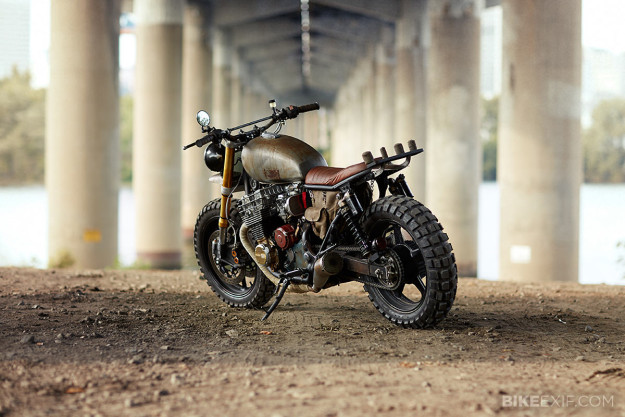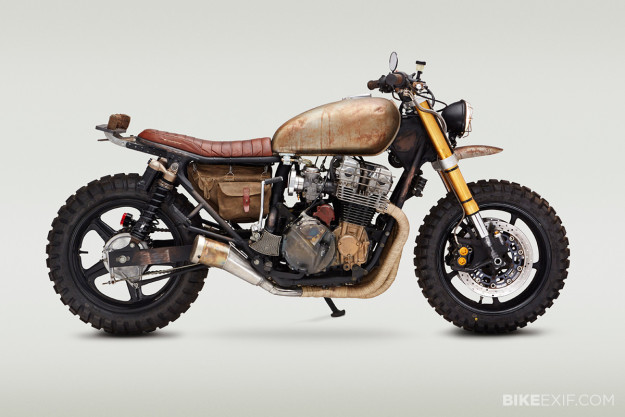
EXCLUSIVE If you have a television in your house, you probably know AMC’s The Walking Dead. If you’re blessed with a strong constitution, you may even be watching it.
It’s a post-apocalyptic drama series that scores millions of viewers for every episode. And unlike most shows of that ilk, it’s a huge hit with critics too.
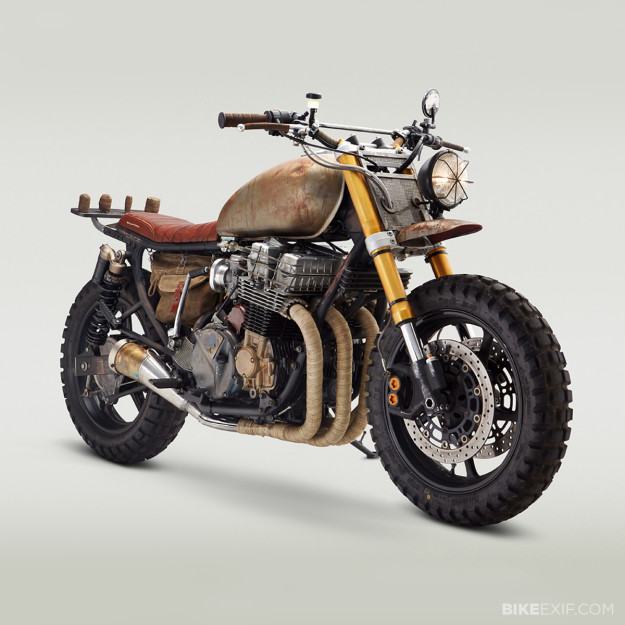
The series returned for the second half of its fifth season in February, and with it comes a new addition to the cast: a motorcycle ridden by the character of Daryl Dixon, played by actor Norman Reedus.
If you see elements of the Classified Moto style in this Honda Nighthawk, you’re right. Reedus already has a Classified bike in his garage, and when the producers of The Walking Dead needed a motorcycle, he knew just the man to speak to …
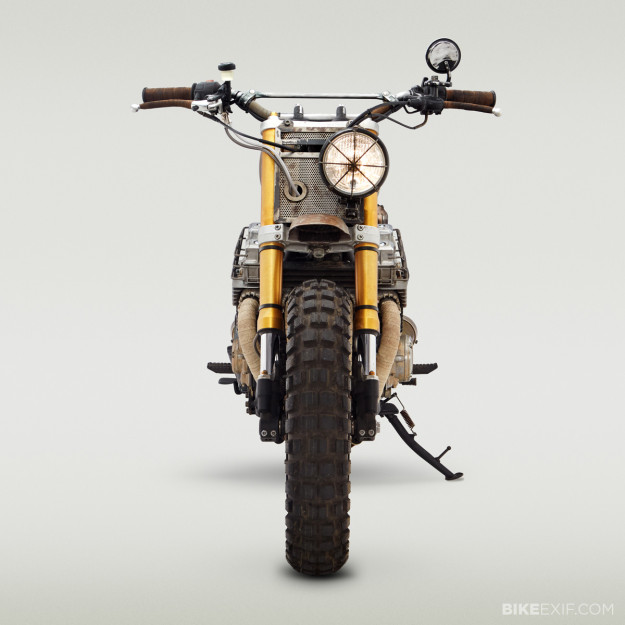
“Norman’s the best,” says Ryland. “Very enthusiastic, straightforward and down to earth—despite millions of fans watching his every move. During one of our conversations, he said he had something in the works that was going to blow my mind. A week later, he introduced me to Scott M. Gimple.”
Gimple is the ‘showrunner’ and an executive producer and writer for The Walking Dead. And he got the show on the road real fast. “Scott liked the Classified Moto style, and wanted us to build a version of what we already do. We didn’t have to get outside our comfort zone—and given the time constraints, that was a good thing.”
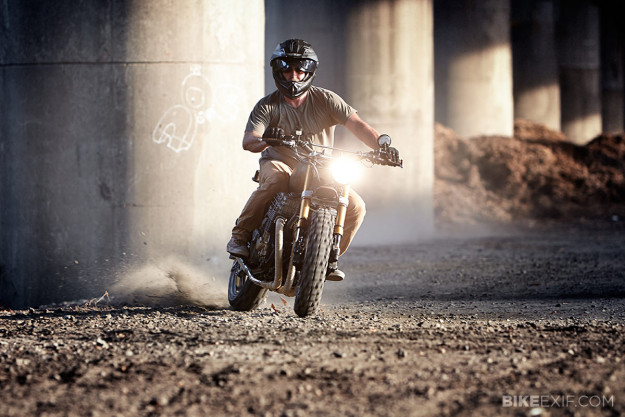
“I felt like I was back to my old advertising days when the project got rolling,” says Ryland. “I made some pretty detailed boards to help Scott choose the direction. We had to quickly settle on the platform, the ergonomics and the major design elements.”
To complicate matters, Ryland had to design the bike and then build two identical replicas. He settled on a 1990s CB750 Nighthawk as the platform: “We’ve worked with the Nighthawk a lot lately, and know it really well.”
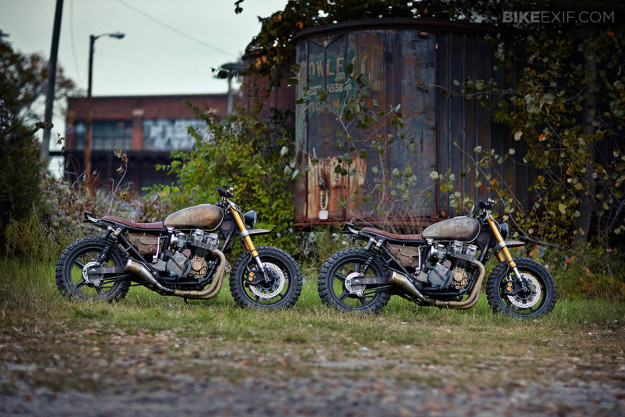
The most difficult part of the project, however, was not the mechanical side: it was the aging and ‘distressing’ of the bikes. “You might think, ‘Rusty tanks and fenders? Ratty paint? No problem.’ But replicating those irregularities is really hard.”
The motors look like they were cobbled together from several sources—thanks to a paint job by Ryland’s wife Betsy. “She made the engines identical down to the last scratch and smudge, applying layers of different paint colors and then sanding and stripping away those layers.” The effect is subtle and realistic, mimicking wear and tear over many years.
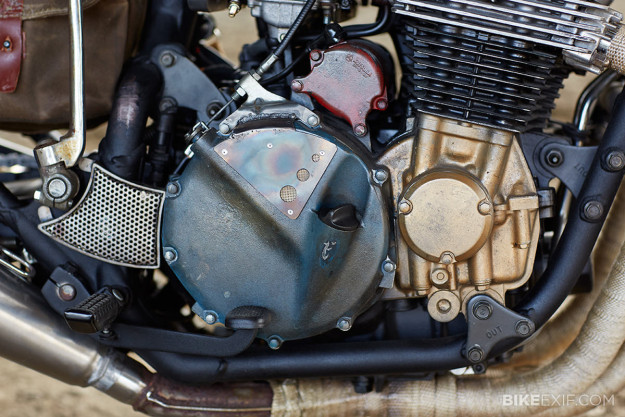
Meanwhile, Ryland was in charge of oxidation and dents. “We didn’t have time to let the parts rust naturally, and even if we did, it’d be impossible to make them look identical. So I made a rust concoction using steel wool, vinegar, peroxide and rust powder.”
Ryland would dab on the rust mixture, drying it with a heat gun between layers. When both sets of parts looked the same, he had them coated in a clear satin powder…after beating the hell out of them with various blunt objects.
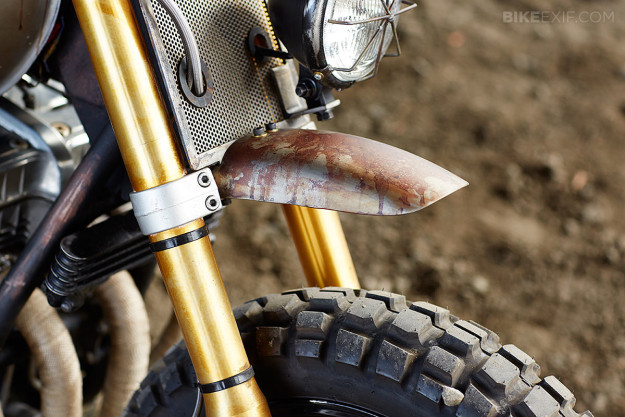
Ryland’s chief mechanic Danik handled most of the fabrication—and the electrical and mechanical work, too. There’s even a false kickstarter that moves like a real one, but doesn’t actually start the bike.
Motor builder Jim Carrol did his part in a fraction of the time he usually gets. David Zemla at Progressive Suspension pulled strings to deliver 970-series piggyback shocks at next to no notice, so they could be scuffed up and aged. Dime City Cycles turned on the taps too, delivering a multitude of other small parts faster than a zombie on speed.
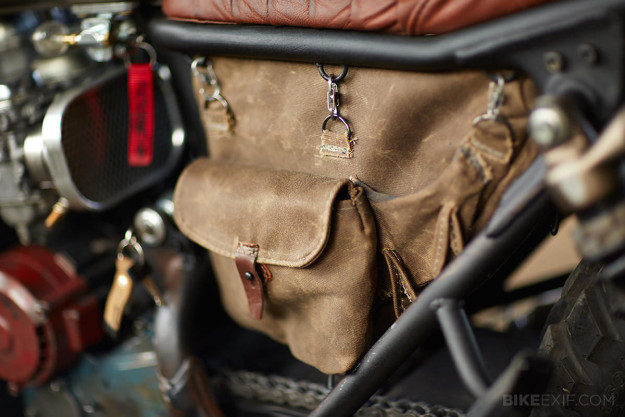
Roy Baird upholstered the seats, and then designed a bag that rides under the subframe. “He took a poster board mockup I made and translated it into a fully functional, durable waxed canvas bag. It fits the look of the bike perfectly, and fills some of the empty space under the seat.”
“We got to work a lot with Tom Luse (executive producer) and John Sanders (prop master). It’s cool because we see their names every week in the opening credits—and they really know their stuff.
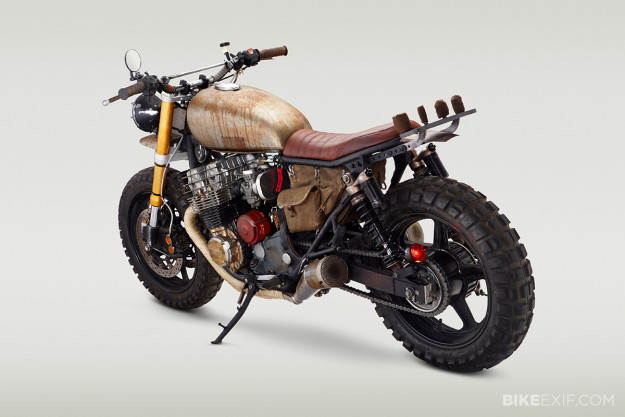
“Tom kept things moving without any drama—a huge asset on a project like this. John is in charge of every weapon, vehicle, trinket, wine glass or backpack that appears in the show. So he’s a wealth of information about how the props will be used, and what kind of abuse they’ll take.”
Because this is Daryl Dixon’s motorcycle, it needed a crossbow mount. And that’s what the rack above the rear fender is for. It had to look good with or without the crossbow in place, and not interfere with a passenger—potentially one wearing a backpack.
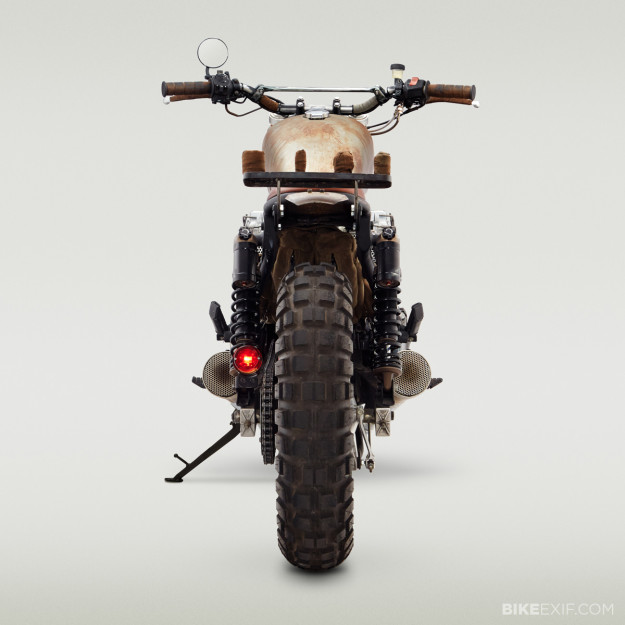
The four padded posts fit into the hollows of the crossbow stock, so Daryl can slam the bow into place and take off in a hurry. It’s a pretty cool setup.
“We’ve done some really out-of-the-ordinary things as Classified Moto, but this project takes the cake,” says Ryland.
“We always love to work with people who appreciate what we bring to the table; getting to do this for one of the most popular shows on TV is really over the top.”
Classified Moto website | Facebook | Instagram | Images by Adam Ewing
DARYL DIXON MOTORCYCLE: BUILD SHEET
Donor: 1992 Honda CB750 Nighthawk
Front end: Yamaha YZF-R6
Front wheel: Yamaha YZF-R6
Front brakes: Yamaha YZF-R6
Rear wheel: Stock Nighthawk
Tires: Kenda Big Block
Shocks: Progressive Suspension 970 piggybacks
Tank: XS650 reproduction
Intake: Twin billet aluminum mesh units CNC milled by Seth Ingham
Exhaust: Modified stock with custom baffles
Seat: Leather, custom upholstered by Roy Baird, Richmond, VA
Battery: Shorai Lithium Ion
Chain: DID X-ring
Rack: Custom crossbow mount
